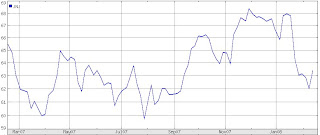This topic will cover some math that is well beyond many novice investors ability to apply; however, the discussion about projecting future growth rates is very helpful. George, does a great job explaining the difficulties businesses face when trying to compound their capital for long periods of time. This is the primary reason why Warren Buffett looks for a business with a "Moat." We will discuss moats and competitive advantages in future posts. Check out Fat Pitch Financials:
Continue ReadingExponential growth is seen in nature when reproduction is not limited by food, space, or disease. When bacteria colonies first form, they often grow exponentially. In the business world, when a radically new product catches on with the masses, or goes “viral”, its sales can grow exponentially for a time.
Young innovative companies with low capital reinvestment requirements can sometimes grow their free cash flows exponentially. However, as time passes on, these exponential growers face resource scarcity, market saturation, and labor scarcity. The law of diminishing marginal returns kicks in and it becomes increasingly more expensive to produce additional units of goods or services because each additional input added is less and less productive. Often while this is going on, competitors seeing these excess profits enter the market and start to drive down prices. It is exceptionally difficult to maintain exponential growth for long in competitive markets. This is the reasoning that has always made me hesitant in using exponential growth rates in my valuations..."


